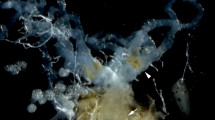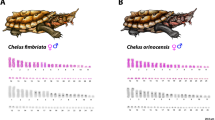Abstract
THE wood lemming (Myopus schisticolor Lilljeborg), a small rodent inhabiting mossy forests of northern coniferous areas of Eurasia, is unique with respect to sex ratio, showing a definite prevalence of females, and with respect to the occurrence of two types of female, one producing daughters only, the other producing progeny of both sexes1,2. We thought that these phenomena might be associated with chromosome constitution, and as the chromosomes of this species were poorly known, we have made a detailed study of its karyotype. Some additional observations, pertinent both to the occurrence of chromosome variation and to reproduction, will be reported elsewhere. We report here two remarkable findings: (1) the existence of two types of fertile female with different somatic sex chromosome constitutions—the orthodox female complement, XX, and the male complement, XY, and (2) evidence for selective non-disjunction in XY females, leading to the formation of X-type egg cells only.
This is a preview of subscription content, access via your institution
Access options
Subscribe to this journal
Receive 51 print issues and online access
$199.00 per year
only $3.90 per issue
Buy this article
- Purchase on Springer Link
- Instant access to full article PDF
Prices may be subject to local taxes which are calculated during checkout
Similar content being viewed by others
References
Frank, F., Naturwissenschaften, 53, 90 (1966).
Kalela, O., and Oksala, T., Ann. Univ. Turkuensis, Series AII 37, 1–24 (1966).
Wang, H. C., and Fedoroff, S., Nature new Biol., 235, 52–53 (1972).
Sumner, A. T., Expl. Cell Res., 75, 304–306 (1972).
Evans, E. P., Breckon, G., and Ford, C. E., Cytogenetics, 3, 289–294 (1964).
Tsuchida, W. S., and Uchida, A. I., Mutat. Res., 22, 277–280 (1974).
Matthey, R., Arch. Jul. Klaus-Stift., 32, 385–404 (1957).
Levan, A., Fredga, K., and Sandberg, A. A., Hereditas, 52, 201–220 (1964).
Ohno, S., Stenius, C., and Christian, L., in Chromosomes Today, 1 (edit. by Darlington, C. D., and Lewis, K. R.), 182–187 (Oliver Boyd, Edinburgh and London, 1964).
Rausch, R. L., and Rausch, V. R., Z. Säugetierk, 37, 372–384 (1972).
Gileva, E. A., Proc. U.S.S.R. Acad. Sci., 213, 952–955 (1973).
Gileva, E. A., and Lobanova, N. A., Trans. 1st int. Theriolog. Cong., Moscow, I, 191–192 (1974).
Gileva, E. A., Proc. U.S.S.R. Acad. Sci., 224, 697–700 (1975).
Author information
Authors and Affiliations
Rights and permissions
About this article
Cite this article
FREDGA, K., GROPP, A., WINKING, H. et al. Fertile XX- and XY-type females in the wood lemming Myopus schisticolor. Nature 261, 225–227 (1976). https://doi.org/10.1038/261225a0
Received:
Accepted:
Issue Date:
DOI: https://doi.org/10.1038/261225a0
This article is cited by
-
Vertebrate sex determination: evolutionary plasticity of a fundamental switch
Nature Reviews Genetics (2017)
-
Unique sex chromosome systems in Ellobius: How do male XX chromosomes recombine and undergo pachytene chromatin inactivation?
Scientific Reports (2016)
-
Long-term stability of allozyme frequencies in a wood lemming, Myopus schisticolor, population with a biased sex ratio and density fluctuations
Heredity (2005)
-
Genetic differentiation among populations of Myopus schisticolor (the wood lemming) — isozyme variation
Heredity (1995)
-
Sex ratio in hybrids between Silene alba and Silene dioica: evidence for Y-linked restorers
Heredity (1994)
Comments
By submitting a comment you agree to abide by our Terms and Community Guidelines. If you find something abusive or that does not comply with our terms or guidelines please flag it as inappropriate.



